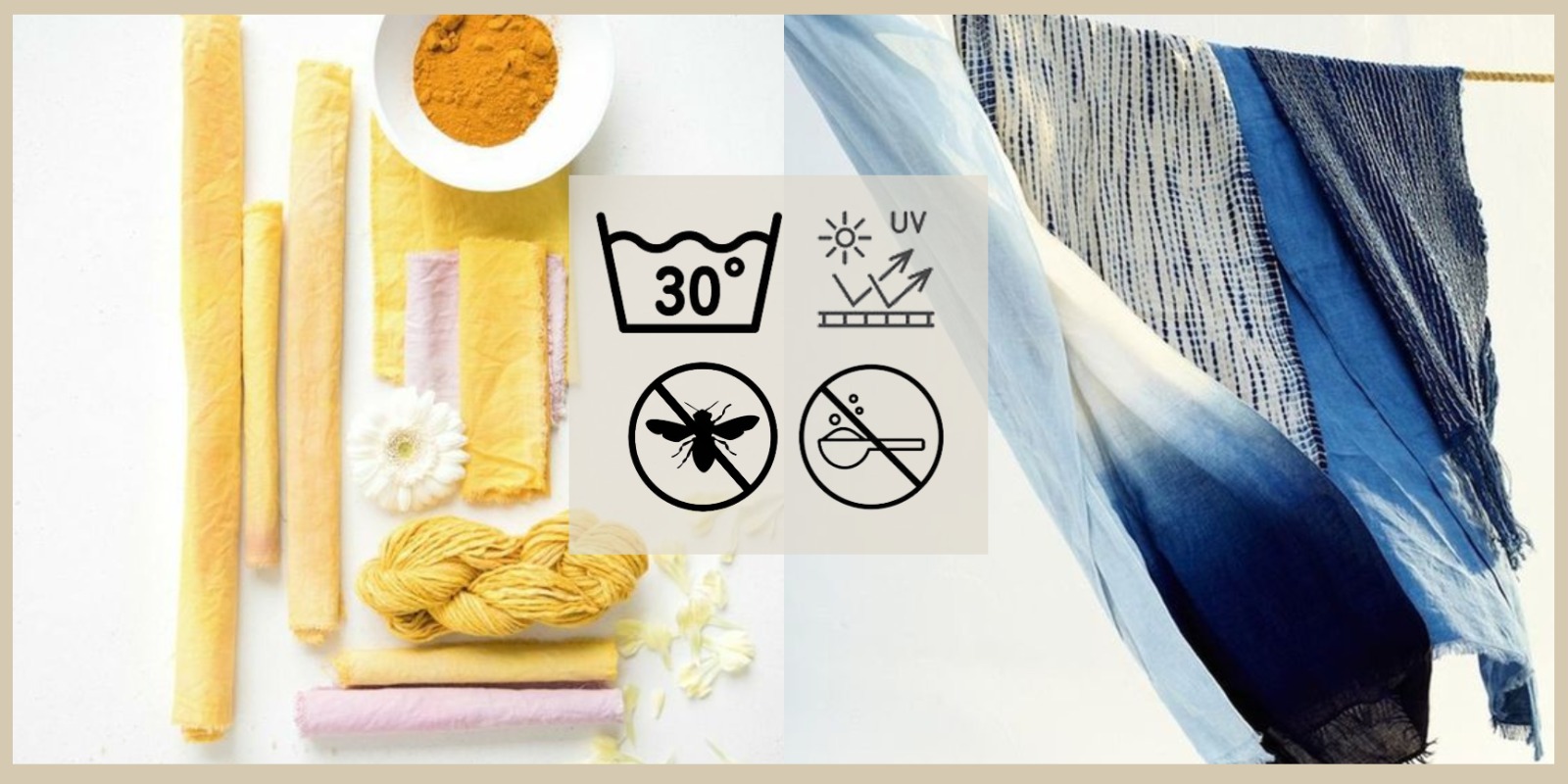
How To Nurture Your Natural-Dyed Clothing

When It Comes To Caring For Garments Made With Natural-Dyed Fabrics Or Clothing, A Gentle Touch And A Mindful Approach Are Key. By Following These Guidelines, We Can Preserve The Vibrancy And Integrity Of Our Natural-Dyed Fabrics.
Introduction
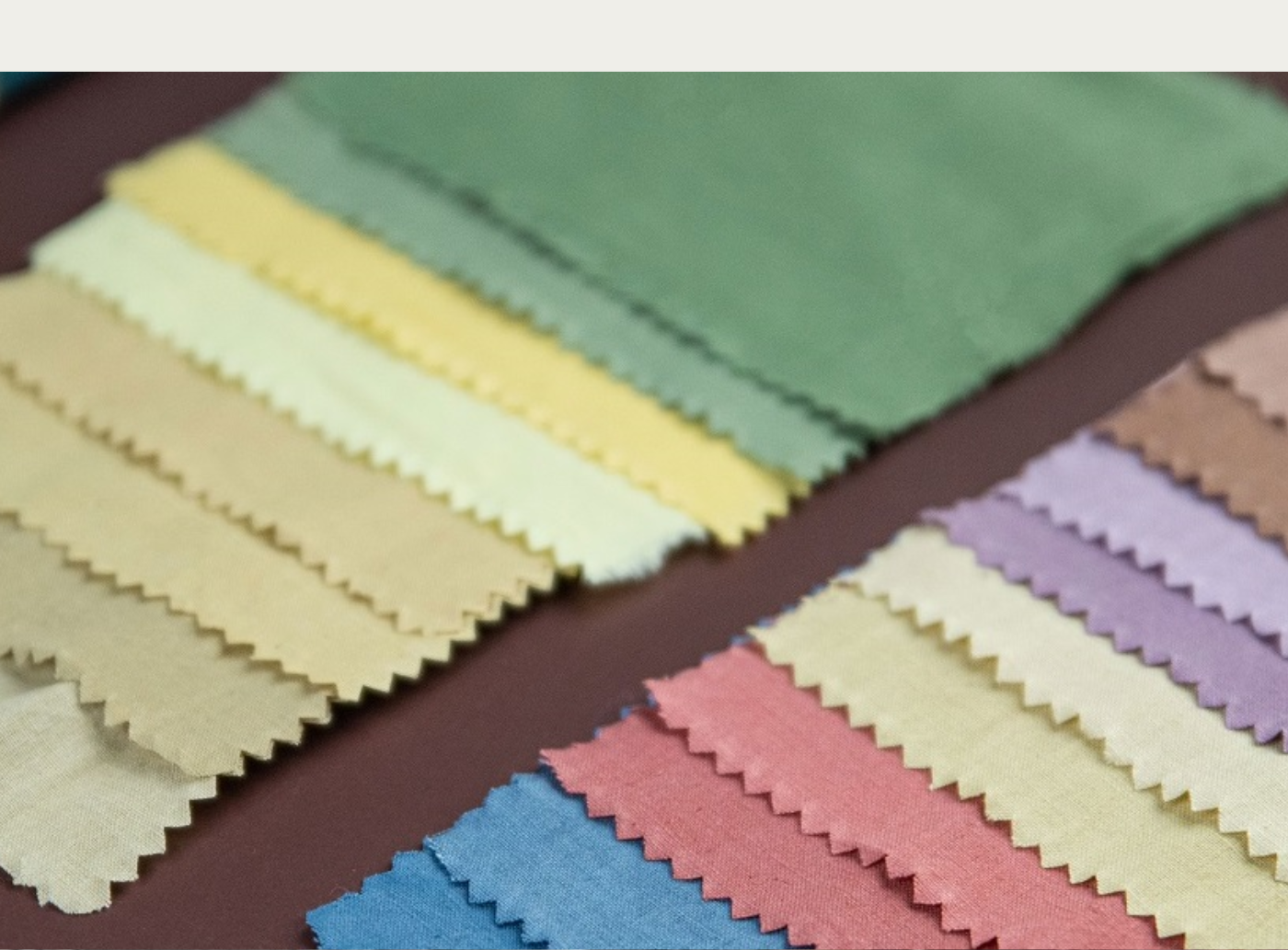
To ensure long-term care of your natural dyed garments, it is advisable to follow the 3 imperative steps of Gentle Washing, Shade Drying and Proper storage.
At Anuprerna, our meticulous selection of dyes includes an array of organic ingredients like Madder, Lac, Marigold, Mulberry Plant, Indigo, and more, enabling us to create stunning dyes that not only enhance the beauty of fabrics but also contribute to a sustainable future.
How to Efficiently Wash Your Natural Dyed Fabrics?
1. Washing at room temperature preserves fabric, and dye, and maintains color and softness.
2. Read the labels on your detergent - Check detergent labels for Optical Brightening Agents (OBAs) to avoid color alterations.
Opt for detergents without bleach activators, zeolite, or sodium perborate to prevent fabric damage.
3. Chlorine bleach detergents contain Sodium perborate, which can be harsh on certain fabrics and may cause discoloration or damage.
4. Avoid dry cleaning natural-dyed fabrics as it can harm texture and color due to solvent use.
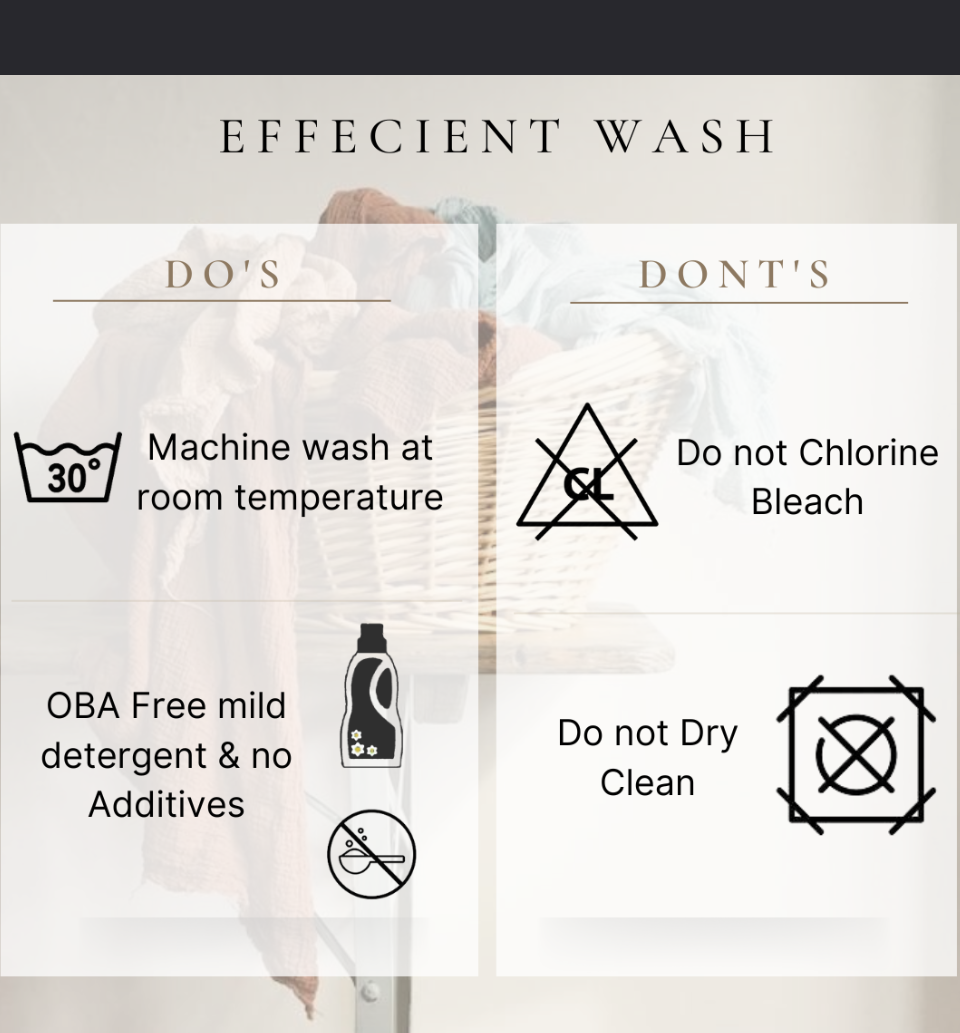
Why should you dry natural dyed fabrics in the shade?
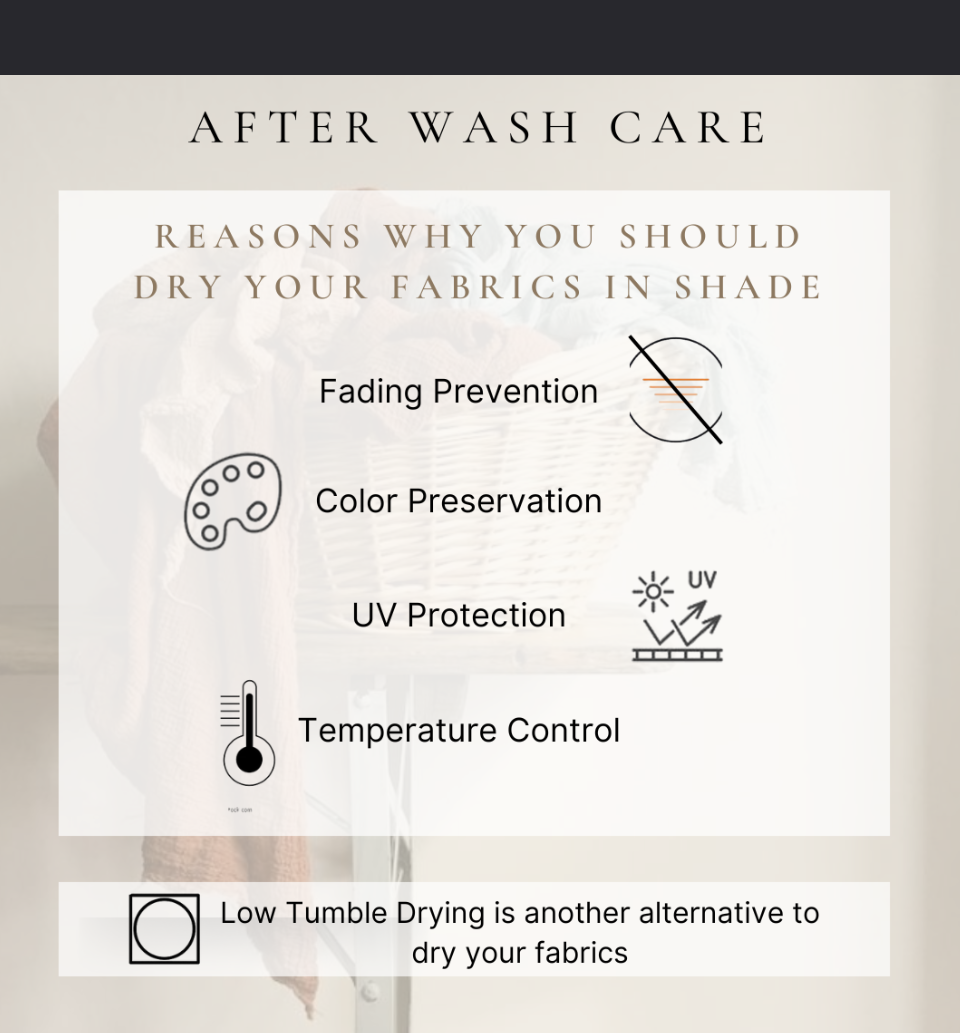
1. Air-dry fabrics in the shade to preserve color vibrancy and longevity.
2. Avoid hanging natural dyed fabrics in direct sunlight to prevent uneven drying and color bleeding.
3. Dry natural-dyed fabrics in the shade to prevent UV rays from degrading colors and ensure dye longevity.
4. Elevated temperatures can accelerate the breakdown of natural dyes, leading to color fading. Dry in the shade to prevent heat-induced color loss and preserve the vibrancy of natural dyes.
Opt for low-tumble drying to prevent shrinkage or damage. Afterward, let fabrics air-dry indoors in the shade for a few more hours.
How to ensure the longevity of Natural Dyed Fabrics?
1. Iron natural-dyed fabrics on low heat to prevent damage.
2. Store textiles in a dry environment to avoid mold, mildew, and color bleeding.
3. Use airtight containers with natural pest deterrents to protect against bugs.
4. Insert acid-free tissue paper between fabric layers to prevent color transfer and deterioration.
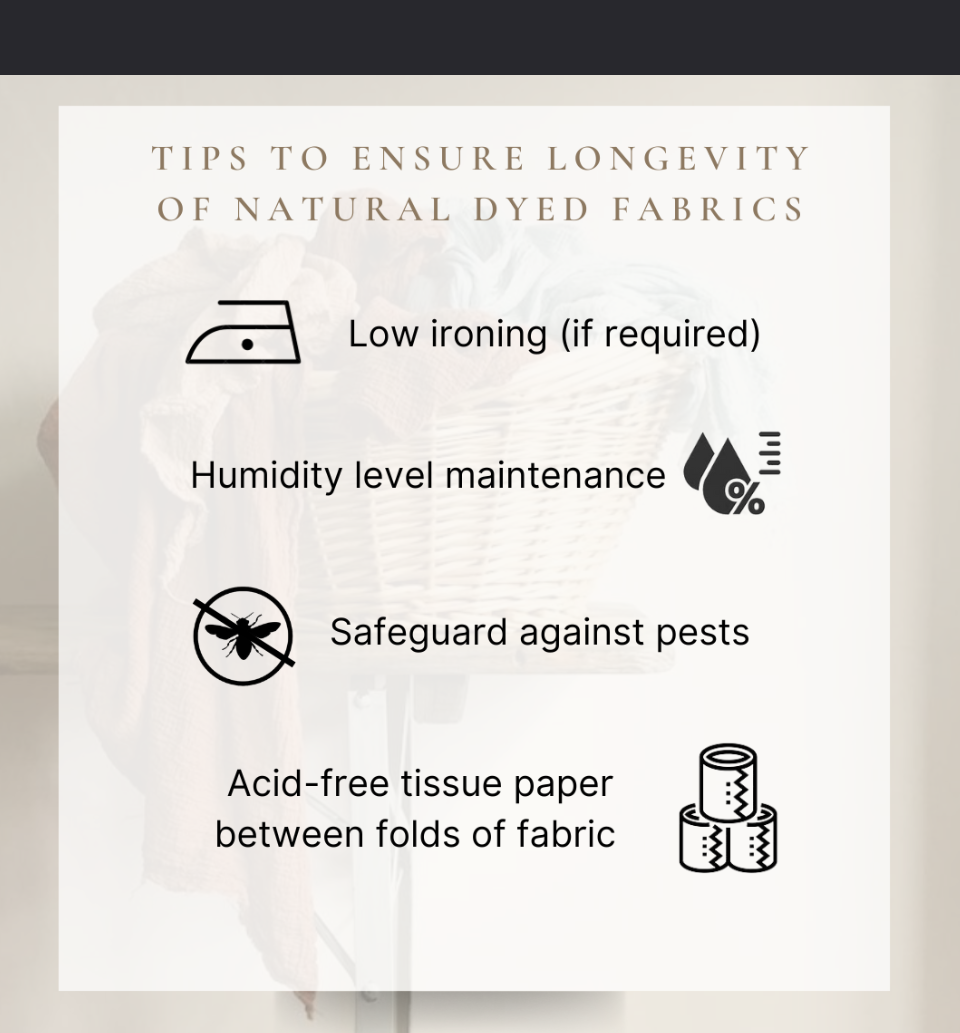
Summary
By choosing these textiles and embracing their care instructions, we actively contribute to the preservation of traditional craftsmanship, support local artisans, and promote a healthier environment. Let us continue to appreciate the exquisite artistry of natural dyes, making them an integral part of our wardrobe and a testament to our commitment to a more sustainable and mindful way of living.
faq
Why are shade drying and proper storage important?
arrow_drop_downShade drying prevents UV rays from degrading colors and heat-induced color loss. Proper storage avoids environmental factors like humidity, pests, and light exposure, ensuring long-lasting fabric integrity and color vibrancy.
How should I wash natural-dyed garments?
arrow_drop_downWash at room temperature to preserve the fabric, dye, and softness. Use a detergent free of Optical Brightening Agents (OBAs), bleach activators, zeolite, and sodium perborate to prevent damage. Avoid chlorine bleach detergents, as they may cause discoloration or damage
Can I dry clean natural-dyed fabrics?
arrow_drop_downNo, avoid dry cleaning. The solvents used in dry cleaning can harm the texture and color of natural-dyed fabrics.
Can I use an iron on natural-dyed fabrics?
arrow_drop_downYes, iron at low heat to avoid damage to the fabric and dyes
What is the best way to store natural-dyed textiles?
arrow_drop_downStore in a dry environment to prevent mold, mildew, and color bleeding. Use airtight containers with natural pest deterrents to protect against bugs. Place acid-free tissue paper between fabric layers to prevent color transfer and deterioration.
More Blogs
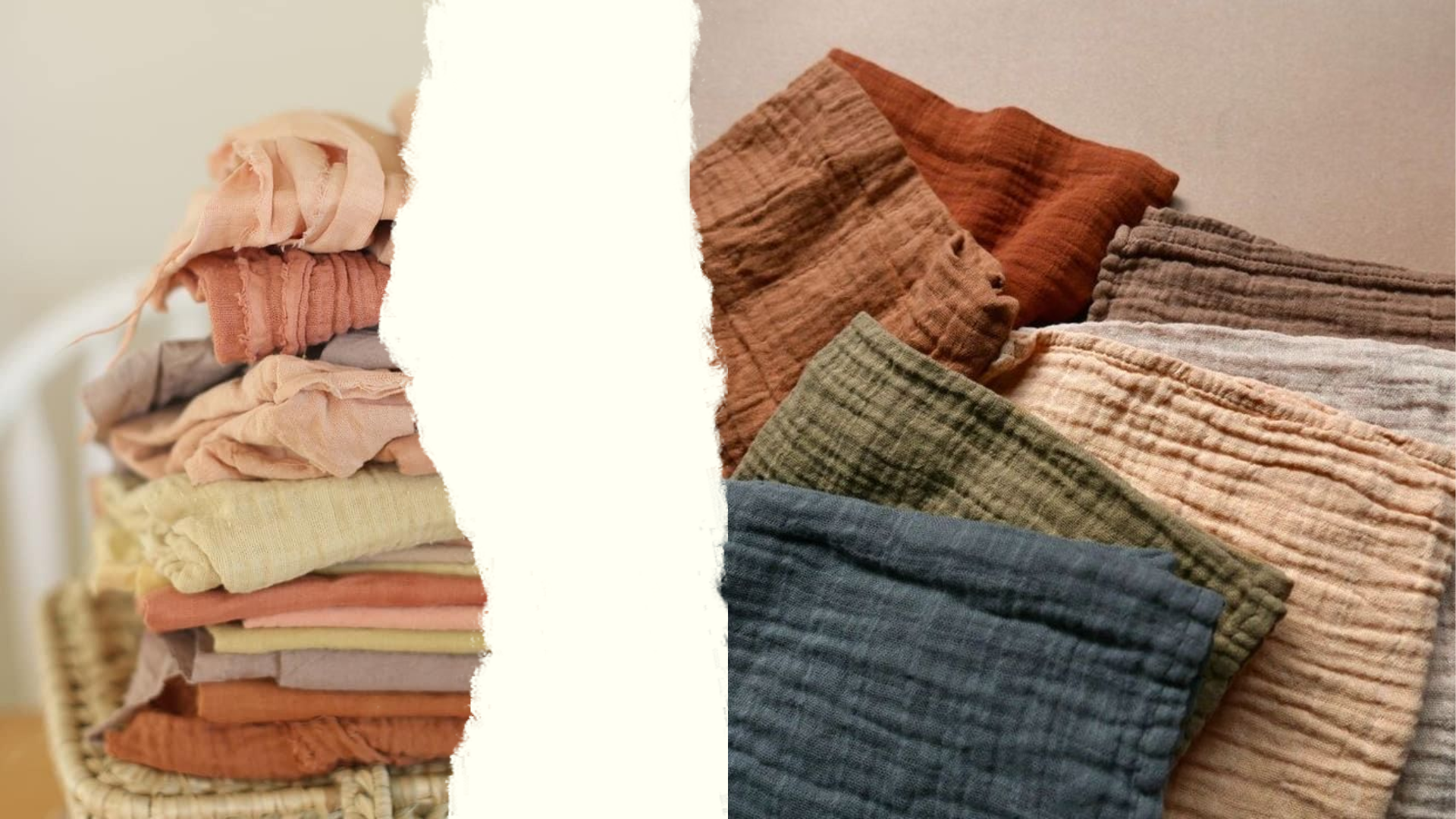
guide to accommodate for fabric shrinkage
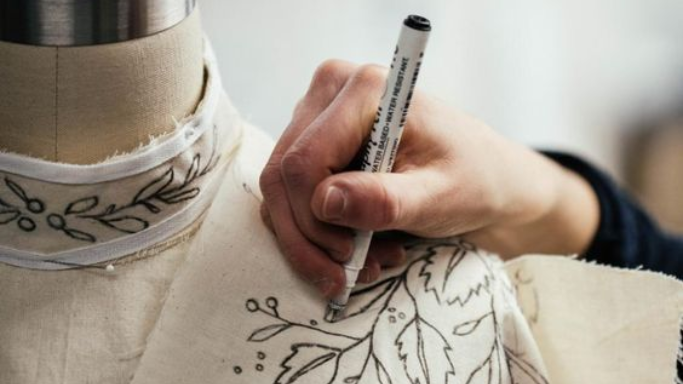
an introductory guide to garment analysis
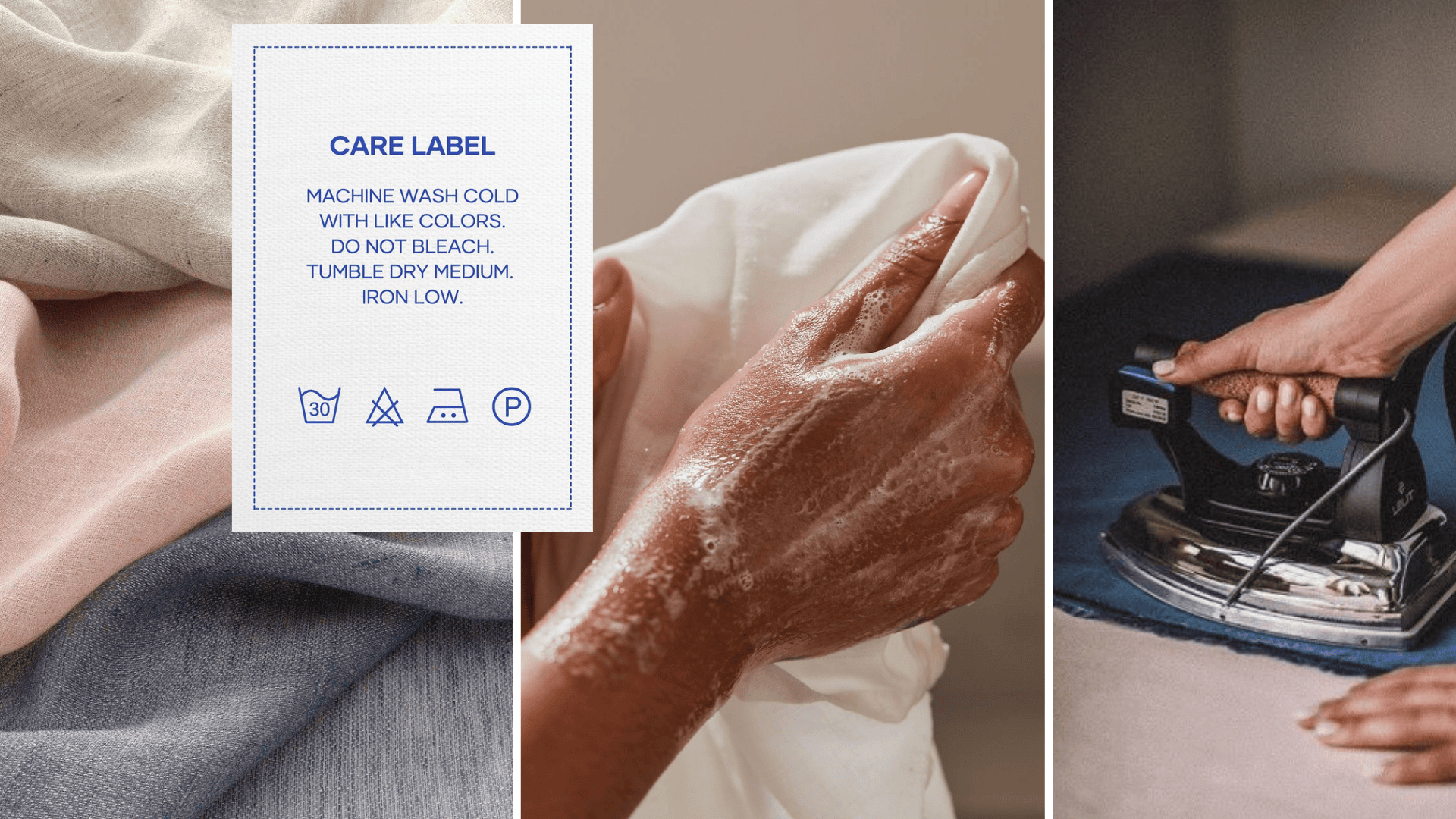
handmade textiles care guide






